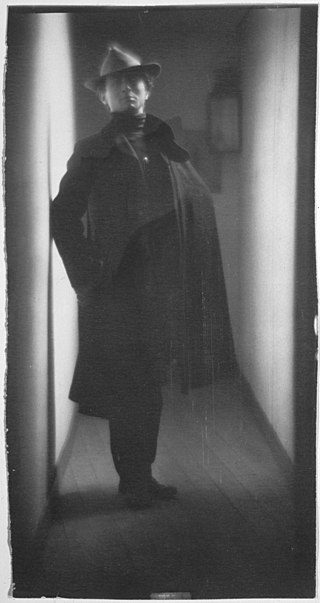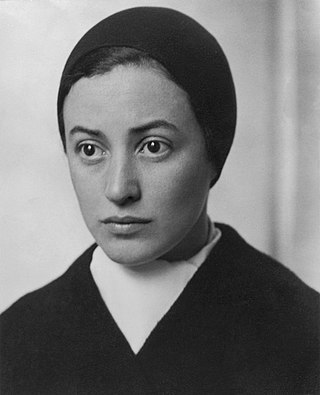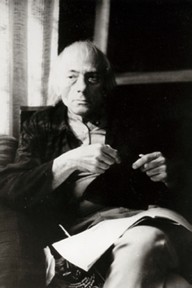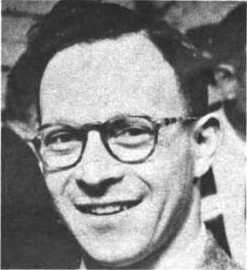Related Research Articles

Edward Jean Steichen was a Luxembourgish American photographer, painter, and curator, renowned as one of the most prolific and influential figures in the history of photography.

The Family of Man was an ambitious exhibition of 503 photographs from 68 countries curated by Edward Steichen, the director of the New York City Museum of Modern Art's (MoMA) department of photography. According to Steichen, the exhibition represented the "culmination of his career". The title was taken from a line in a Carl Sandburg poem.

Antoinette Frissell Bacon, known as Toni Frissell, was an American photographer, known for her fashion photography, World War II photographs, and portraits of famous Americans, Europeans, children, and women from all walks of life.

Esther Bubley was an American photographer who specialized in expressive photos of ordinary people in everyday lives. She worked for several agencies of the American government and her work also featured in several news and photographic magazines.

Dorothy Norman was an American photographer, writer, editor, arts patron and advocate for social change.

Louis Faurer was an American candid or street photographer. He was a quiet artist who never achieved the broad public recognition that his best-known contemporaries did; however, the significance and caliber of his work were lauded by insiders, among them Robert Frank, William Eggleston, and Edward Steichen, who included his work in the Museum of Modern Art exhibitions In and Out of Focus (1948) and The Family of Man (1955).
Wayne Forest Miller was an American photographer known for his series of photographs The Way of Life of the Northern Negro. Active as a photographer from 1942 until 1975, he was a contributor to Magnum Photos beginning in 1958.
Arthur Leipzig was an American photographer who specialized in street photography and was known for his photographs of New York City.
J. R. Wharton Eyerman was an American photographer and photojournalist.
Arthur B. Rickerby was an American photographer whose most famous works are his sports photography, especially his color photography essays, and his photographs of the Kennedy administration. His work is most noted for its realism and pioneering use of the 35 mm camera and the early zoom lens.
Herbert Gehr (1910–1983) was a Jewish German-American photographer and television director who was associated with Life magazine.

Howard Sochurek was an American photojournalist.
May Mirin (1900-1997) was an American photographer who documented life in Mexico.
Margery Lewis (Smith) was an American photographer active from the 1940s to the 1970s.
Caroline Hebbe was a Swedish art photographer active in the 1950s-1970s and working in a subjective style in affinity with the Fotoform movement. She later became an international curator of Swedish arts, crafts and design.
William Vandivert was an American photographer, co-founder in 1947 of the agency Magnum Photos.
Ewing Krainin was an American magazine, advertising and travel photographer active 1940s-1970s.
Carter Jones was an American freelance photographer.

Arthur Lavine was an American mid-century photojournalist and magazine photographer who, among other achievements, produced significant documentation of New Caledonia during World War 2.
Sam Falk was an early- and mid-twentieth-century American photojournalist who worked for The New York Times from 1925 to 1969, and wrote and photographed for other publications.
References
- ↑ Rosenblum, Naomi (1994), A history of women photographers (First ed.), Abbeville Press, ISBN 978-1-55859-761-7
- ↑ Loengard, John; Parks, Gordon, 1912-2006; Life magazine (2004), The great Life photographers, Thames & Hudson, ISBN 978-0-500-54293-4
{{citation}}: CS1 maint: multiple names: authors list (link) CS1 maint: numeric names: authors list (link) - 1 2 Mary O'Donnell Hulme: Lisa Larsen biography at International Center for Photography
- ↑ ’Brooklyn’s Marathon Grand Jury: It’s Good Citizens Have Upset Both Underworld and Police Department, Photographed by Lisa Larsen’ In LIFE, 9 Jul 1951, Vol. 31, No. 2, P.75-83, ISSN 0024-3019, Time Inc.
- ↑ James Rorty in Commentary, January, 1955, p.31 cited in Viereck, P. (1955). Symbolism of the New Xenophobia. Southwest Review, 40(4), 353-359.
- ↑ Steichen, Edward; Norman, Dorothy (1955). Mason, Jerry (ed.). The family of man : the photographic exhibition. Sandburg, Carl, (writer of foreword), Lionni, Leo, (book designer), Stoller, Ezra, (photographer). New York, N.Y.: Museum of Modern Art / Maco Magazine Corporation.
- ↑ ’For Nehru ad Chou, A Rude Awakening at Bandung: Friends of the West Speak Up; photographed for LIFE for Howard Sochurek and Lisa Larsen’. In Life May 2, 1955, p.30, Time Inc.
- ↑ Shimazu, N. (2014). Diplomacy As Theatre: Staging the Bandung Conference of 1955. Modern Asian Studies, 48(1), 225-252.
- ↑ Star Weekly, no. 486, 23 April 1955
- ↑ Wanita, no. 10, year 7, 20 May 1955
- ↑ Lukisan Dunia, no. 17, year 3, 28 April 1955
- 1 2 3 'Photographer's Legacy: Friends'. In Life, Vol. 46, No.12, p.2, March 23, 1959
- ↑ Larsen, L. (1946), LIFE visits Yaddo. LIFE, July 15, pp. 110–113.
- ↑ Solomon, J. (2005). Young, Effeminate, and Strange: Early Photographic Portraiture of Truman Capote. Studies in Gender and Sexuality, 6(3), 293-326.
- ↑ Rupen, R. (1957). Outer Mongolia Since 1955. Pacific Affairs, 30(4), 342-357. doi:10.2307/2753123
- 1 2 Wach, M. (2018). Life–Paris Match–Świat: East/West Image Transfer in the Weekly Magazine Świat (1951-1969) and the Impact of the Magnum Style on Photo-Reportage in Poland. International Journal for History, Culture and Modernity, 5(1).
- 1 2 Riccihardi, S. (1998). Getting the picture. American Journalism Review, 20(1), 26-32.
- ↑ American Photo, Sep-Oct 2001, p.31, Vol. 12, No. 5.ISSN 1046-8986
- ↑ New at UMMA: Life Magazine 1947 Homecoming Photographs
- ↑ 'Michigan Homecoming: Alumini Make Annual Pilgrimage, See Great Football Team'. In LIFE, 3 Nov 1947, p.31-7, ISSN 0024-3019, Time Inc.